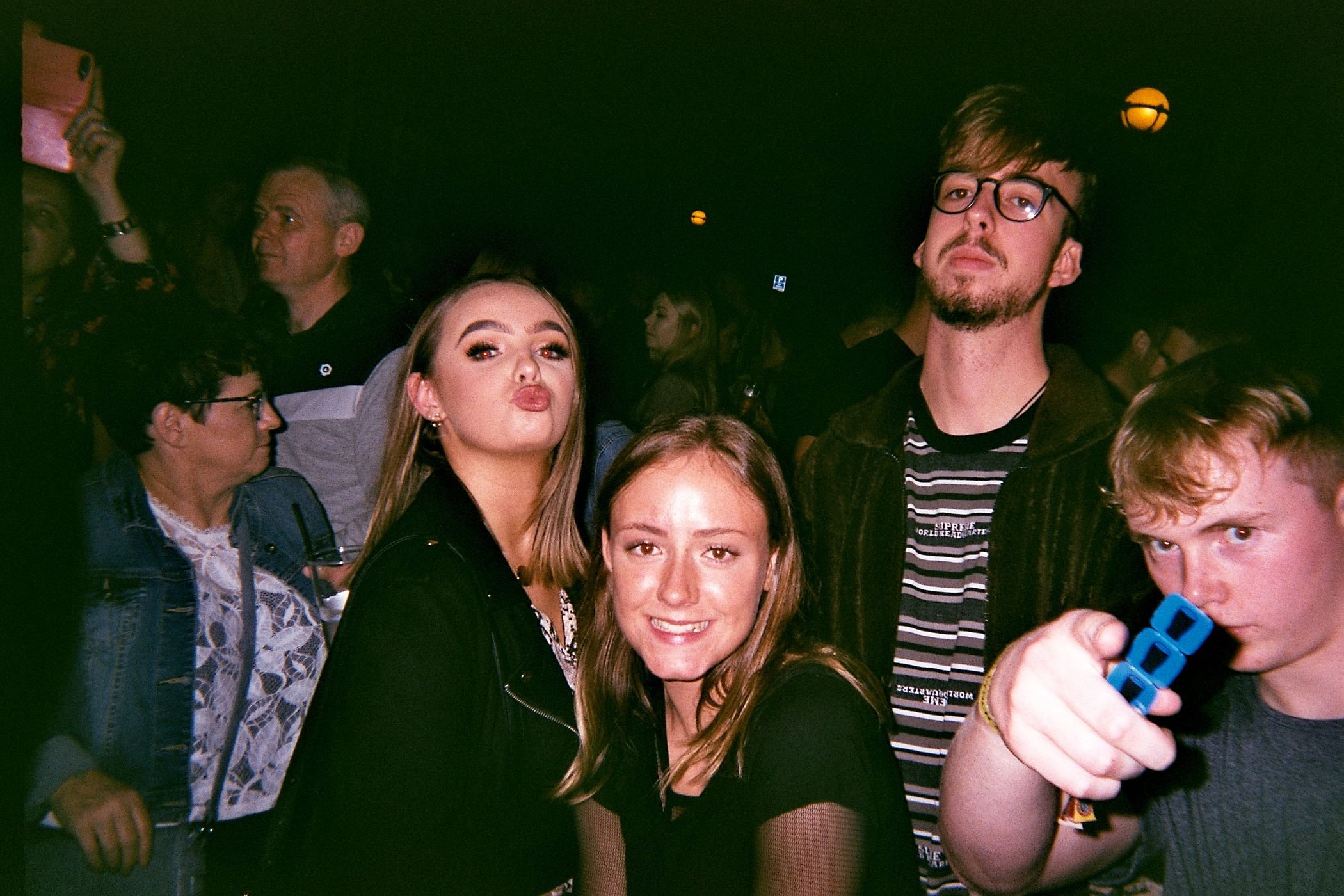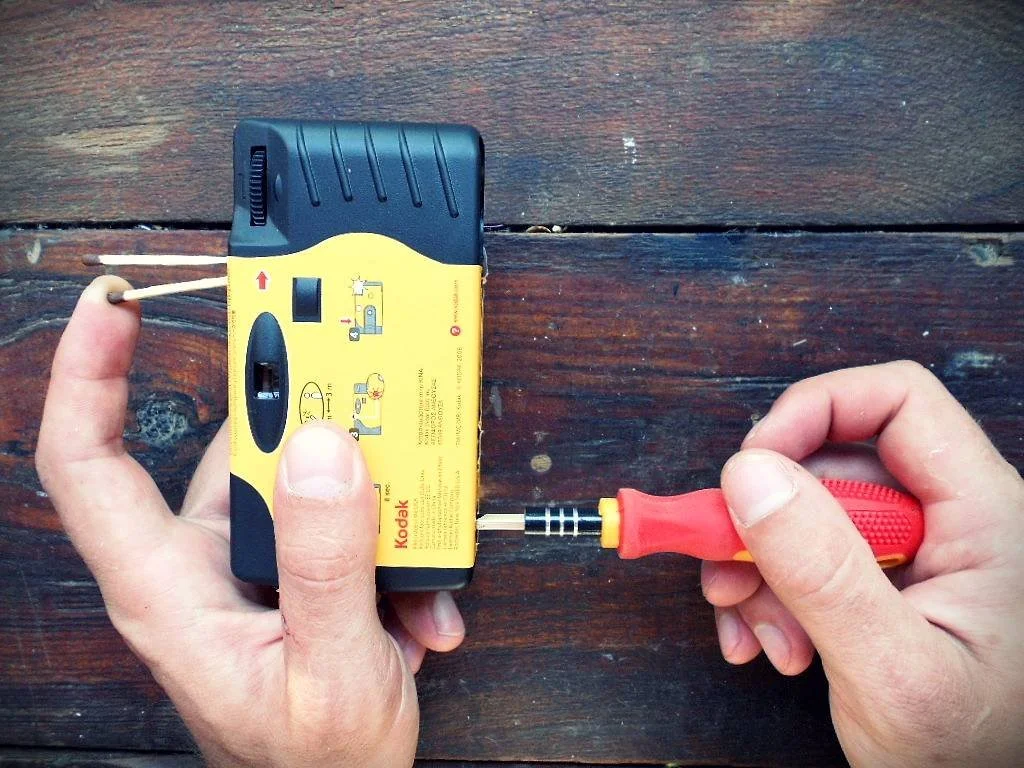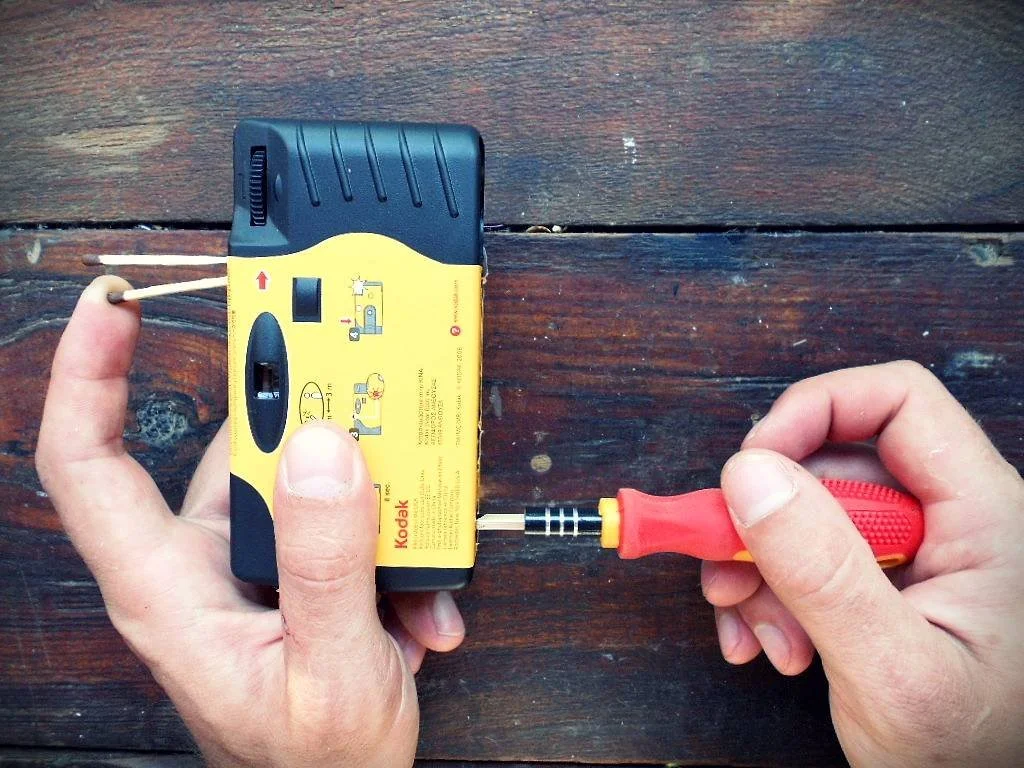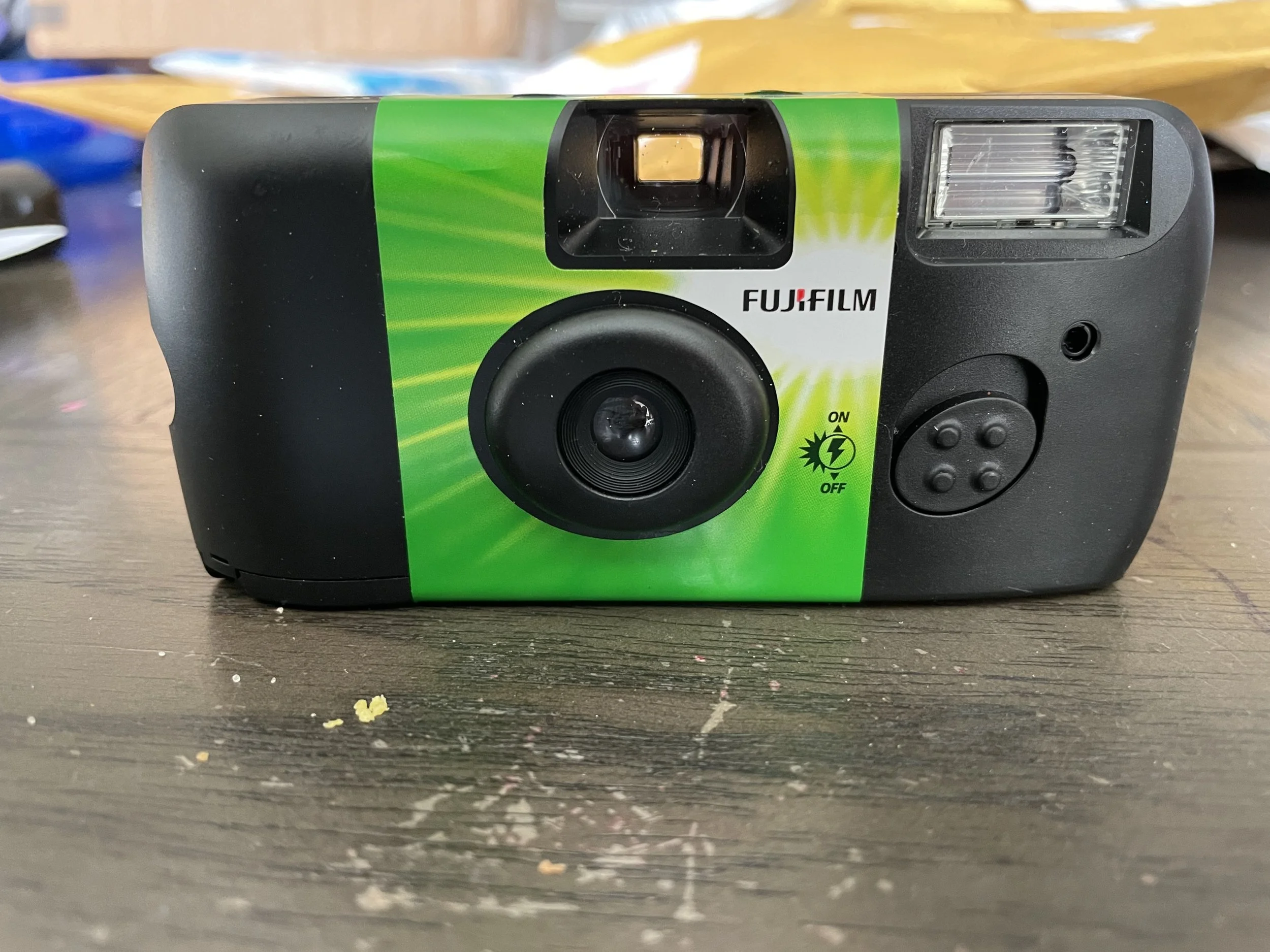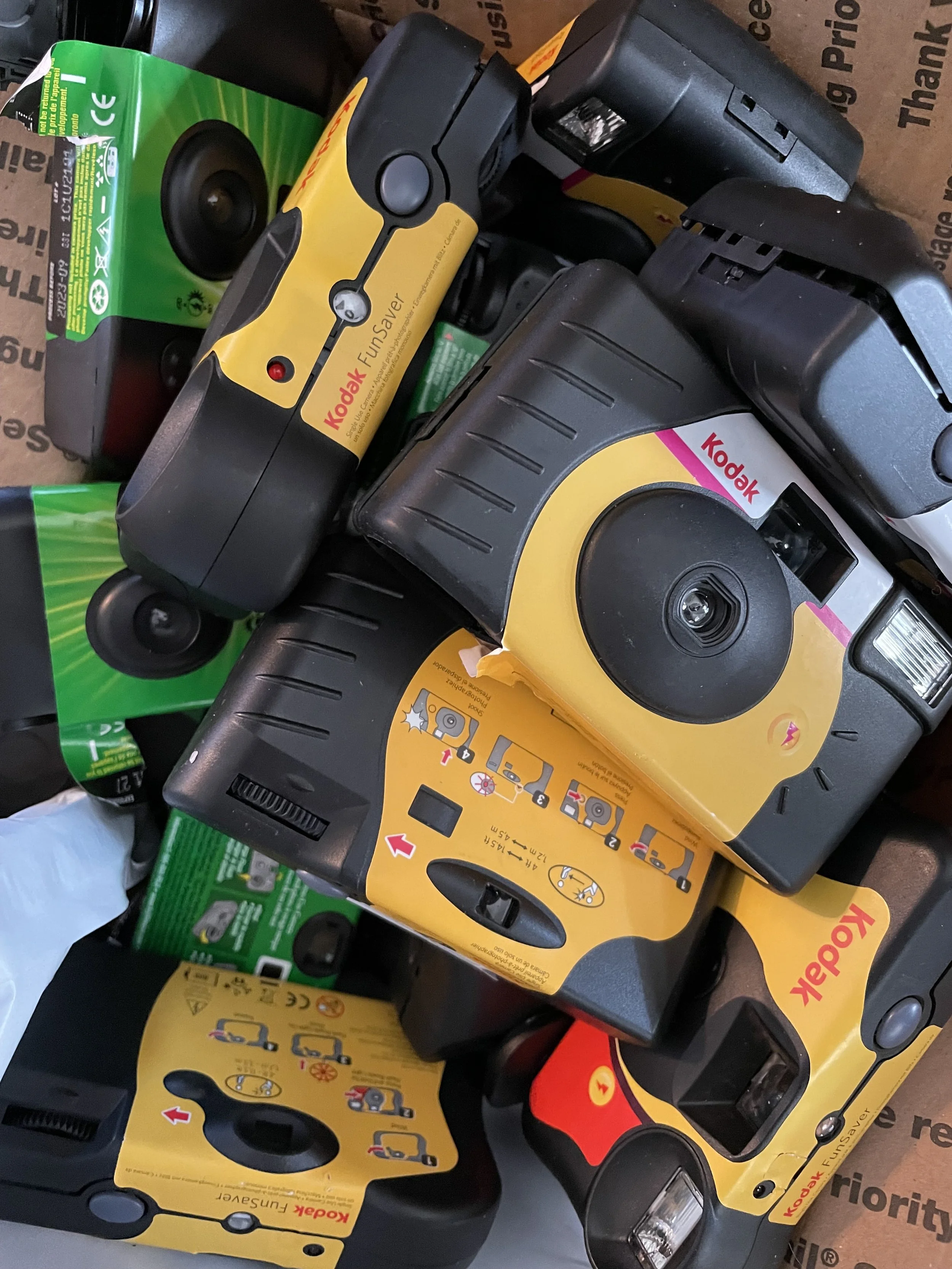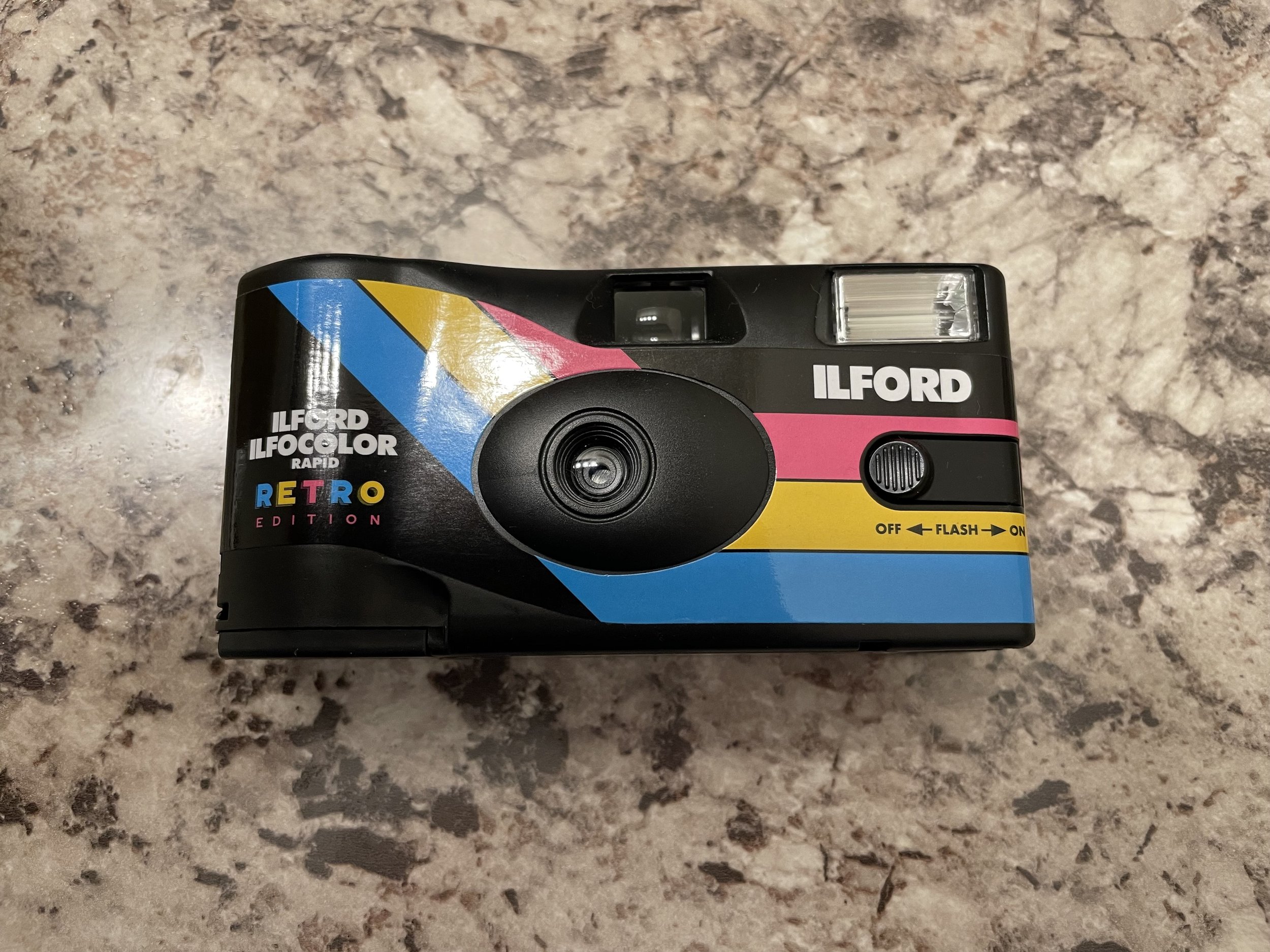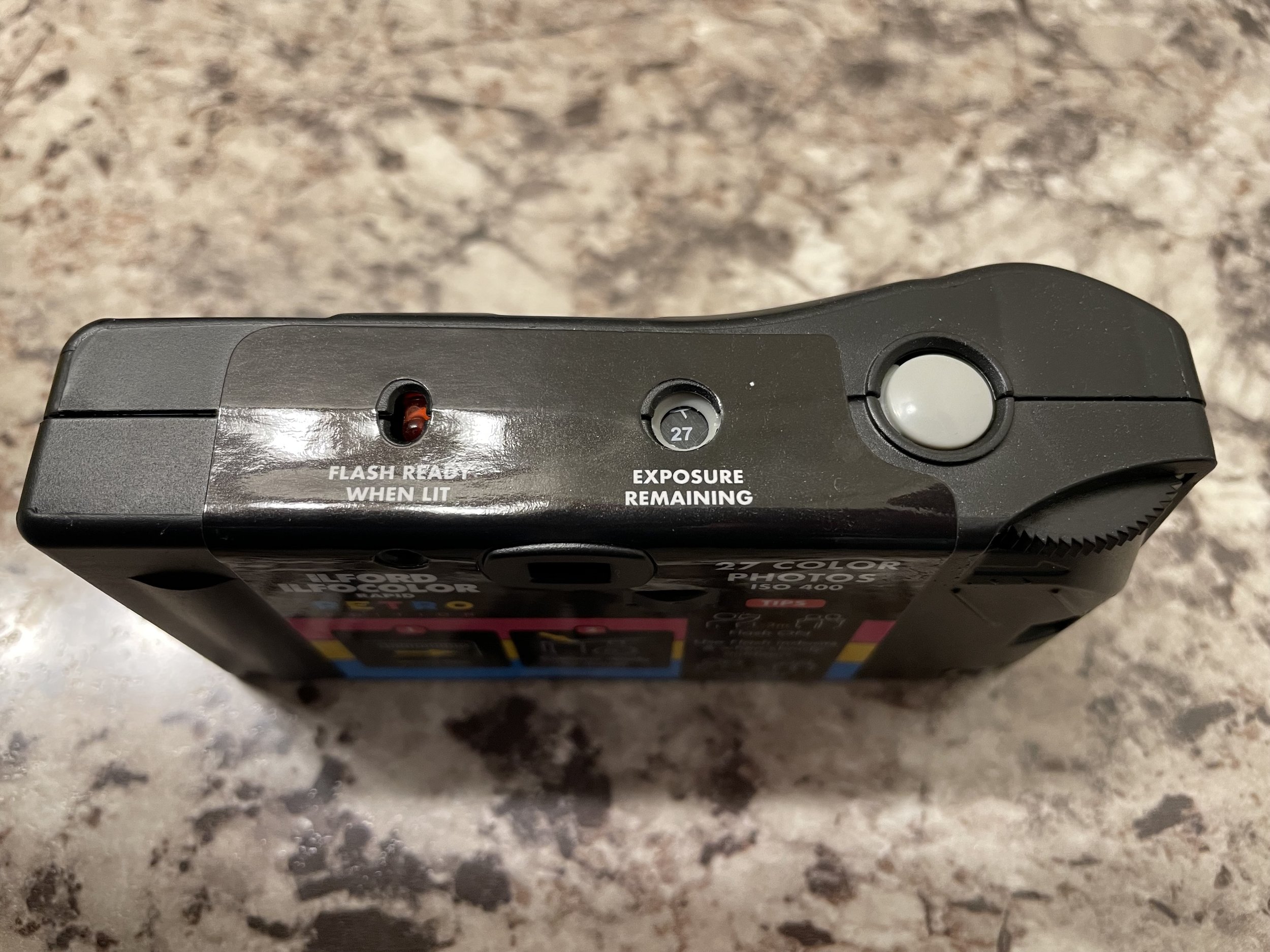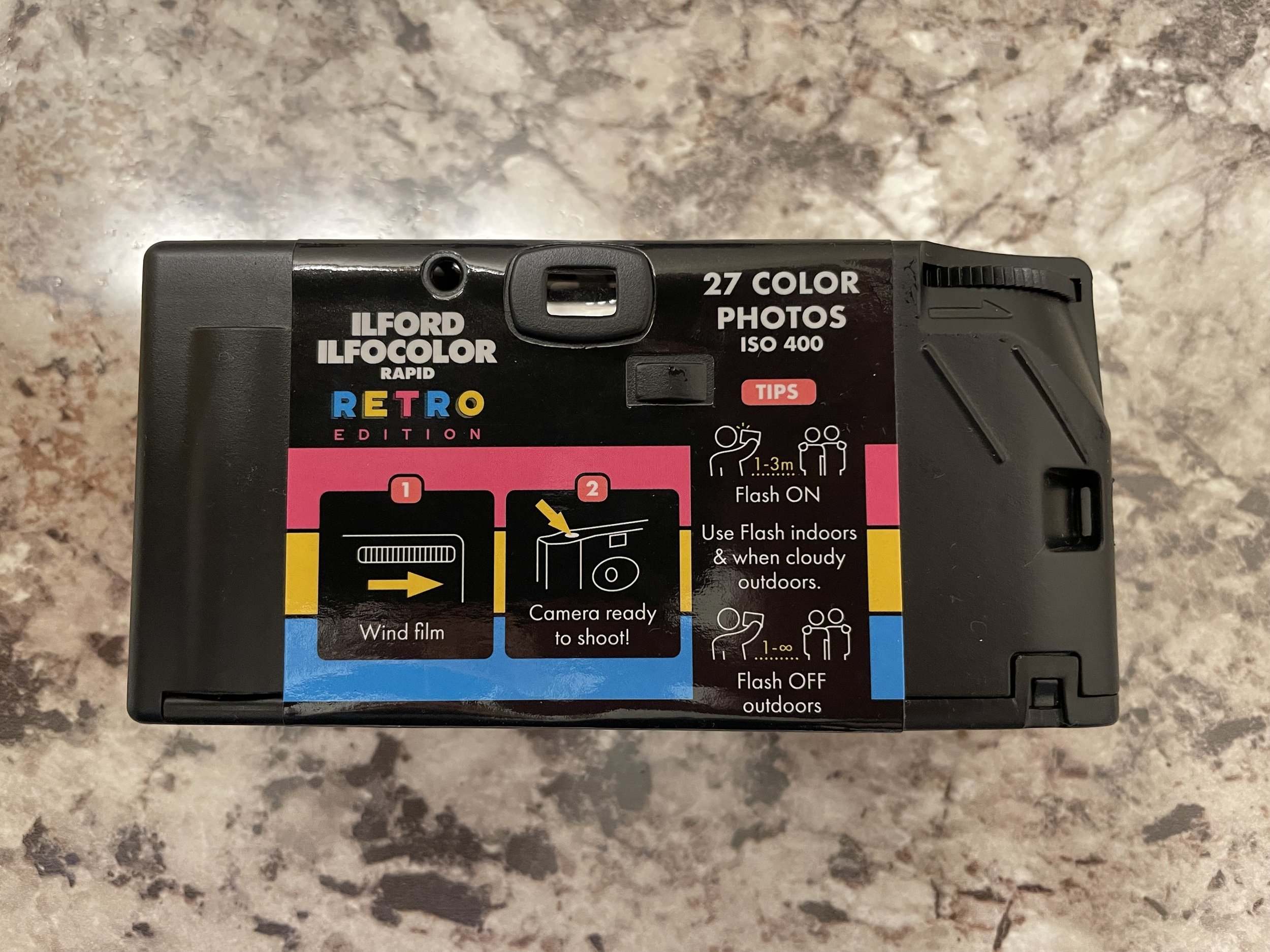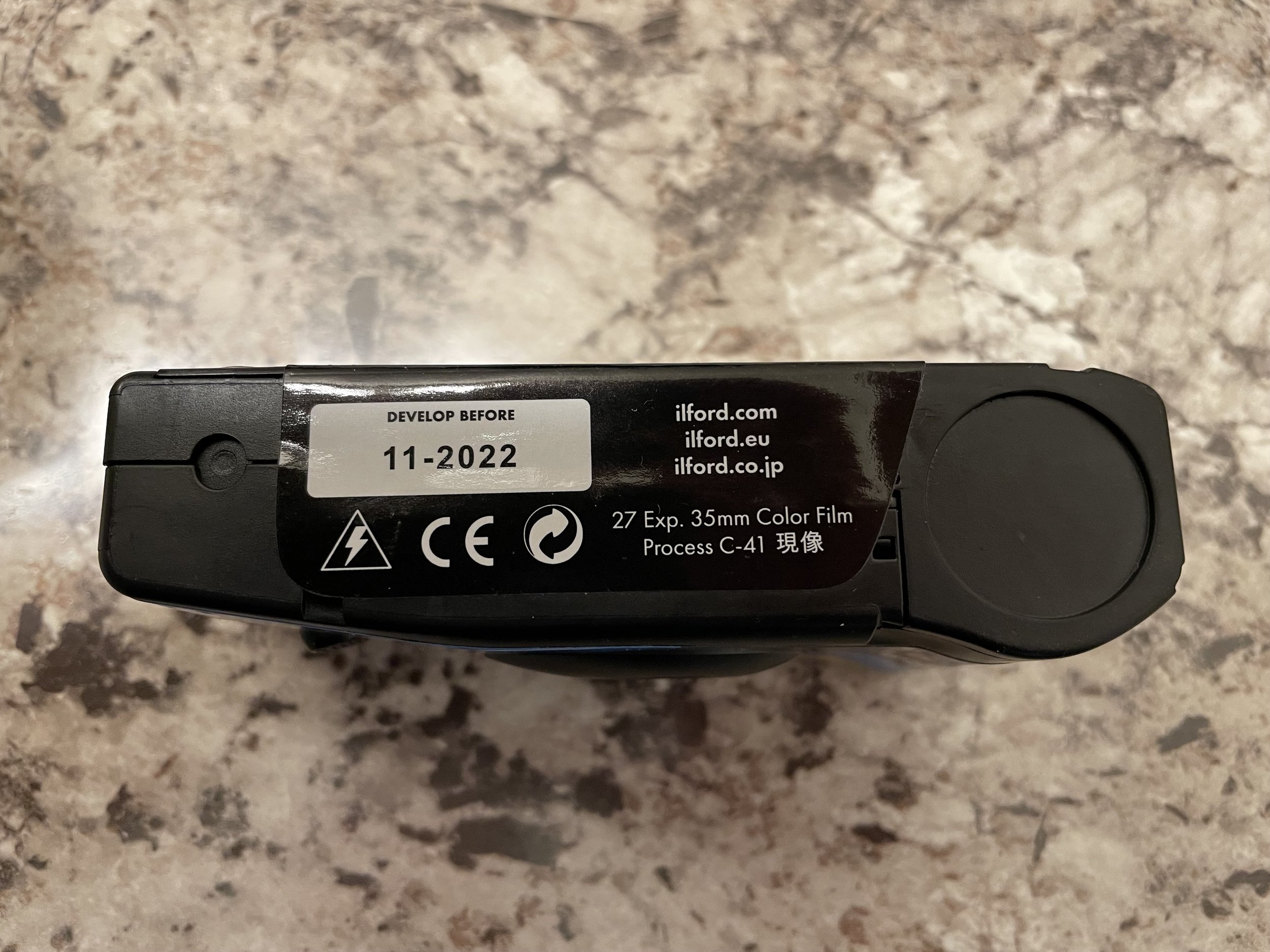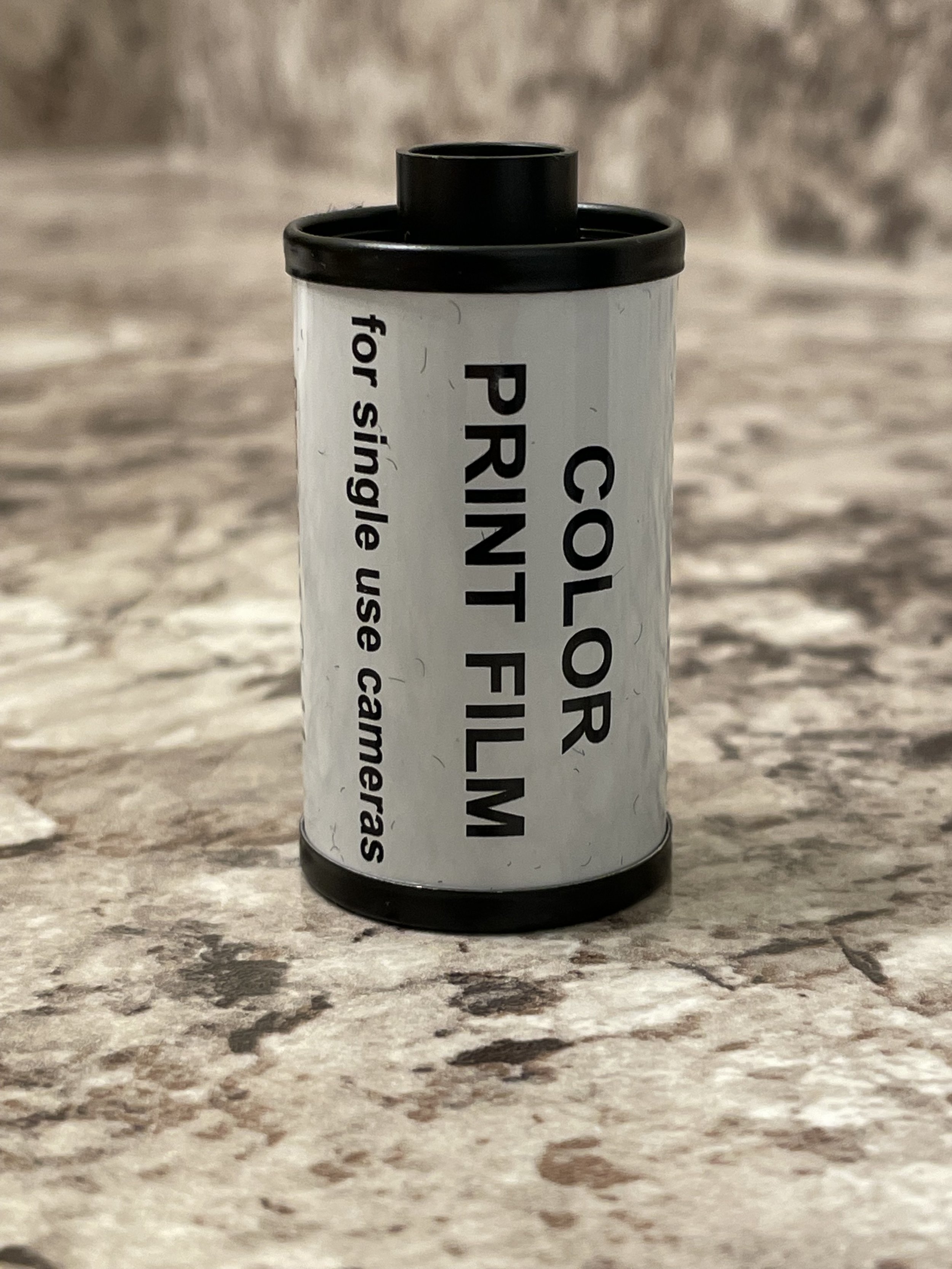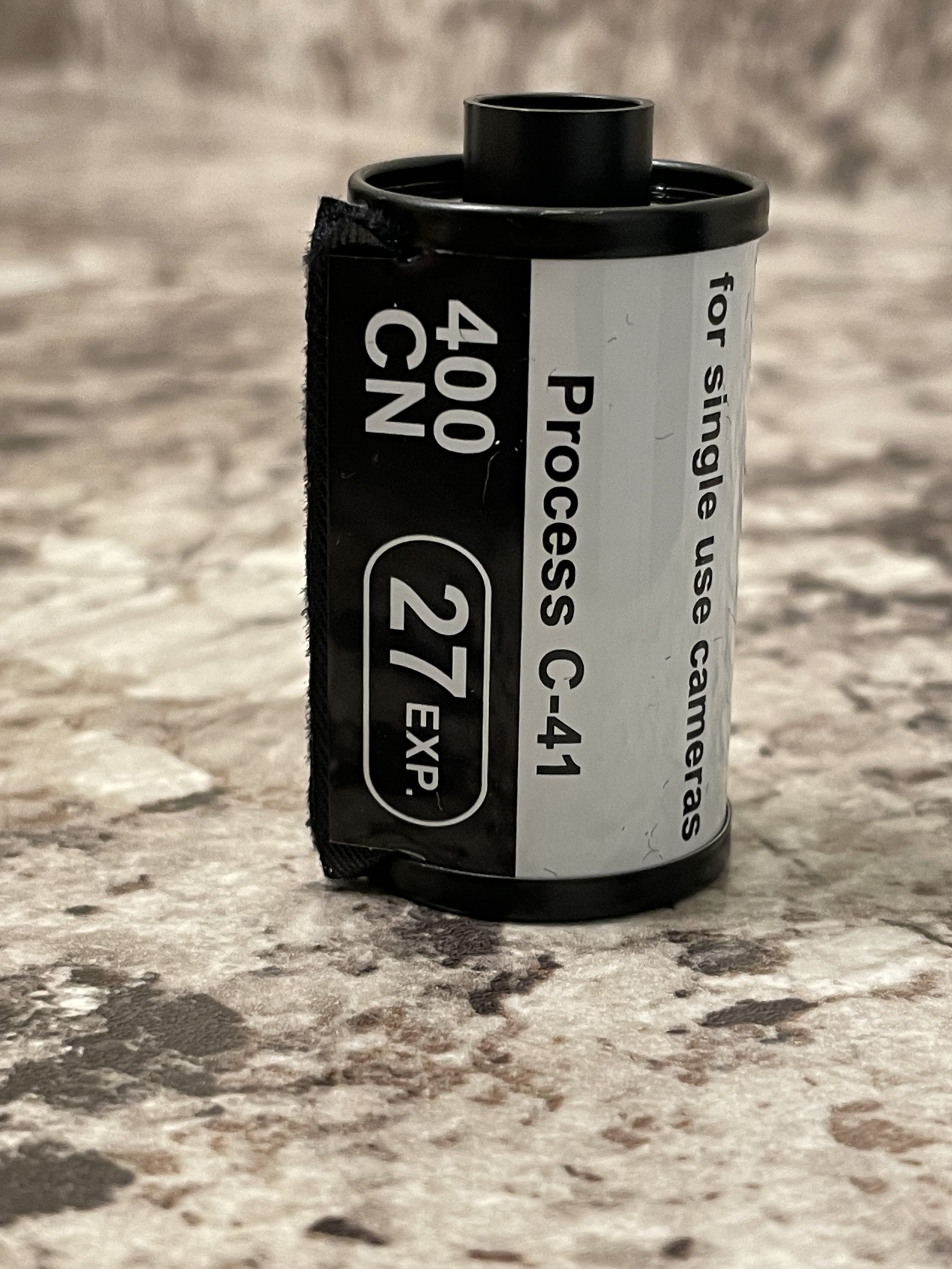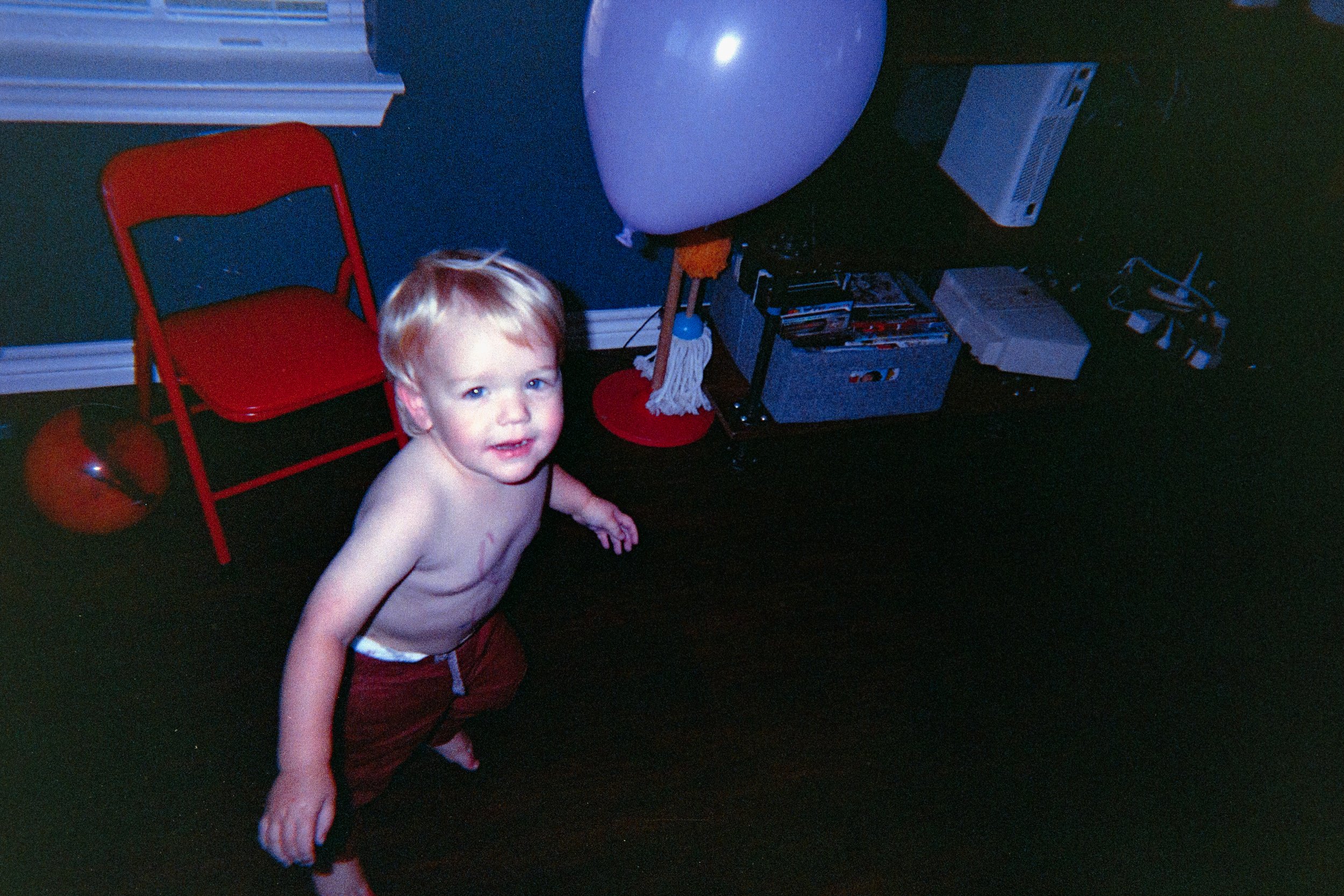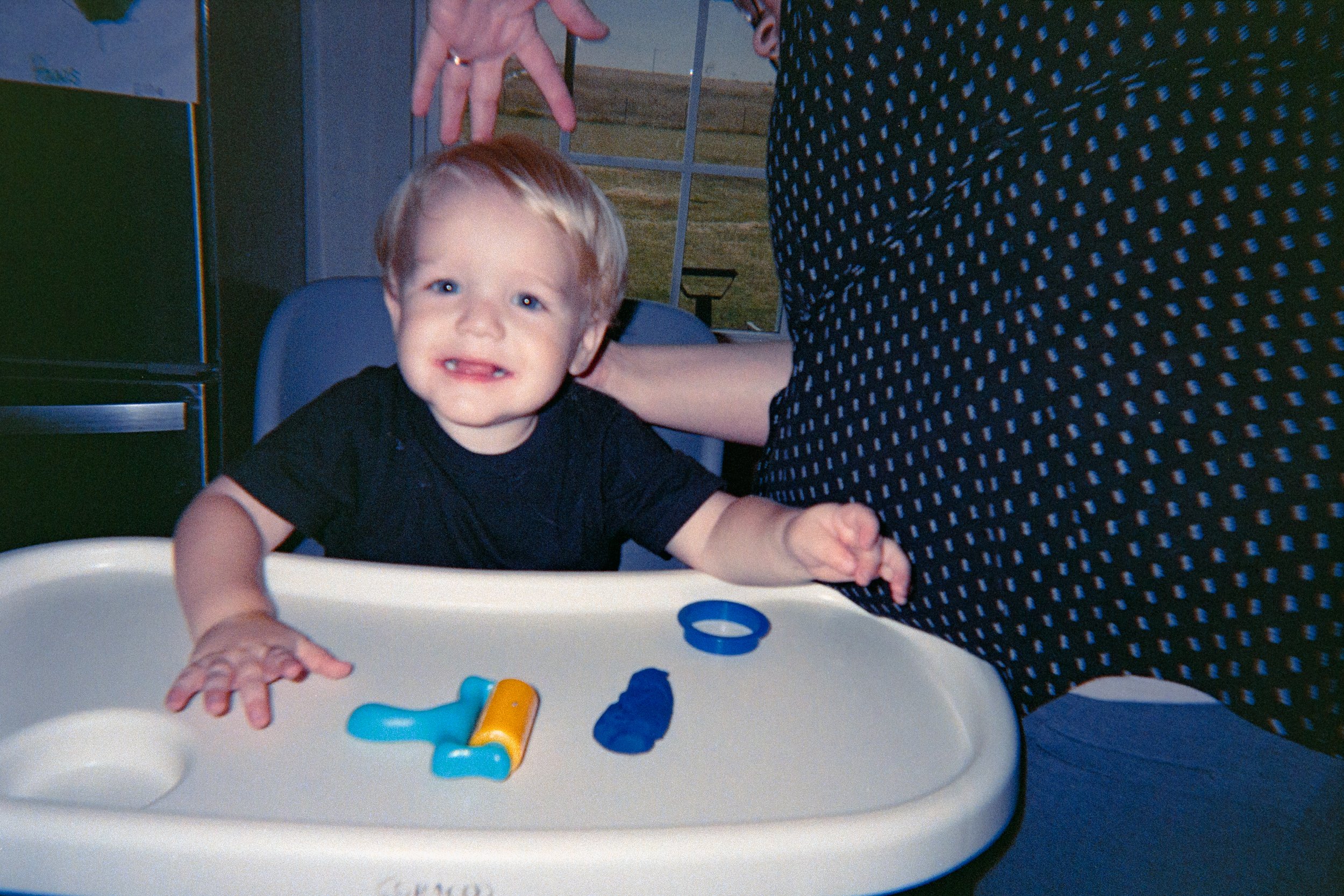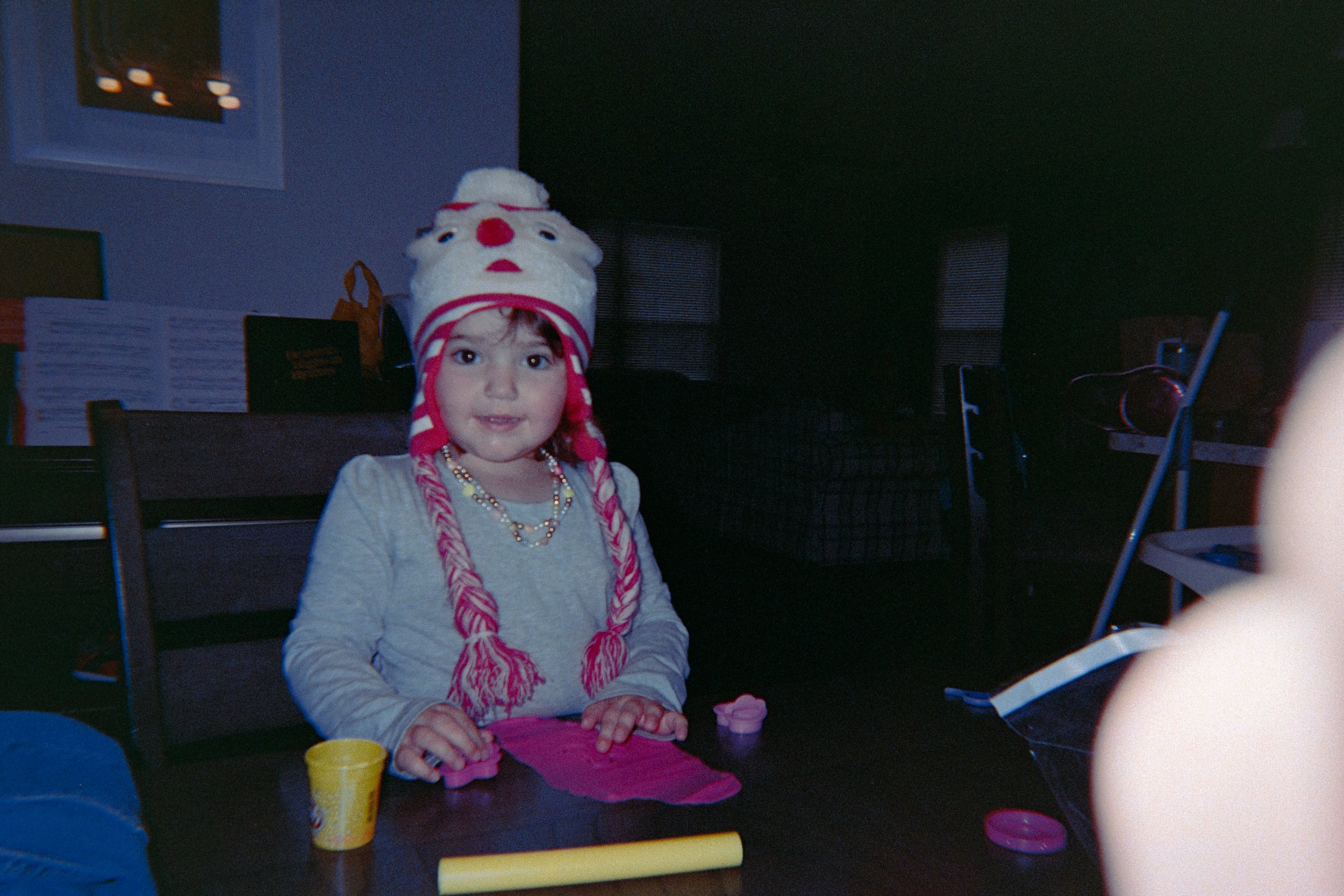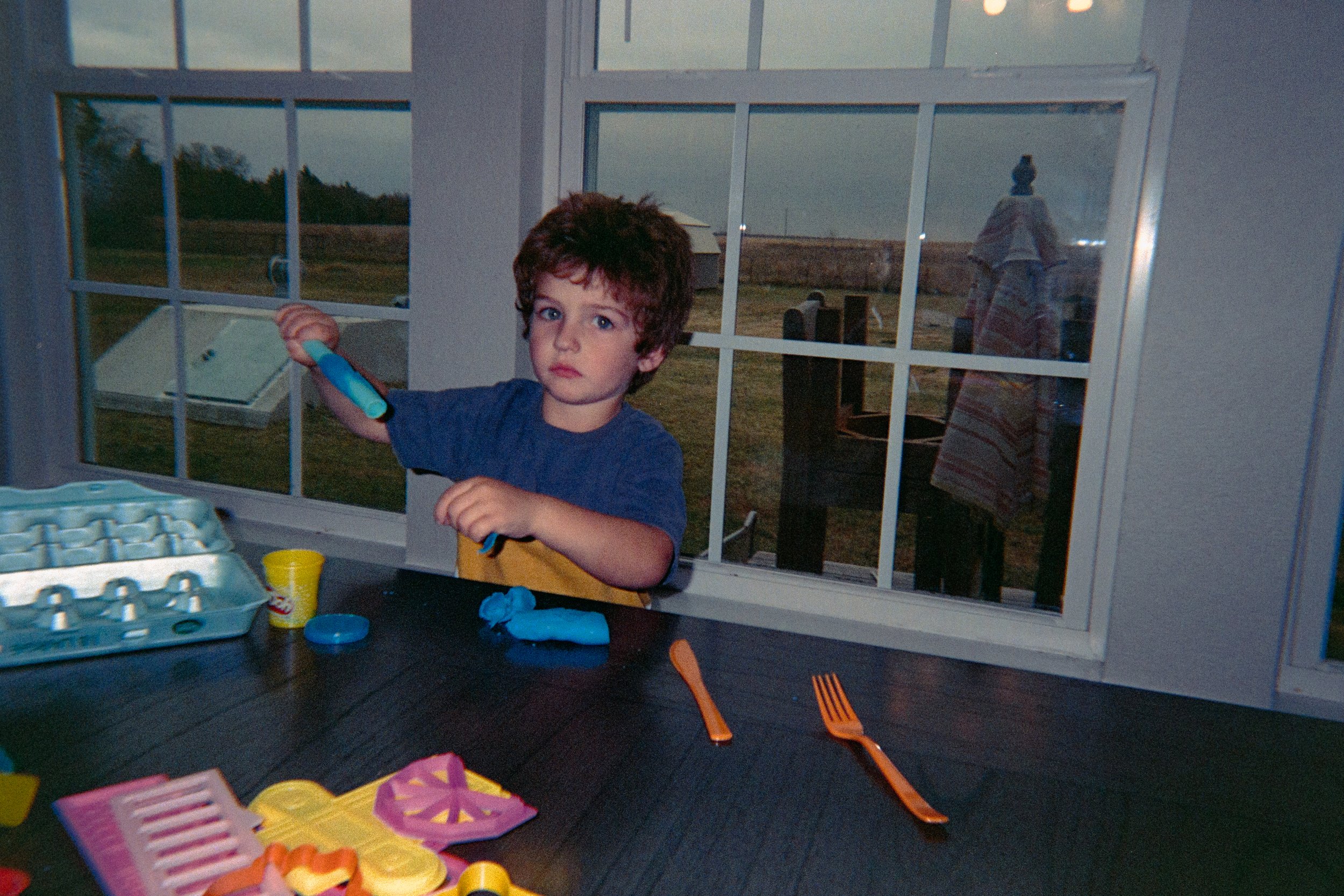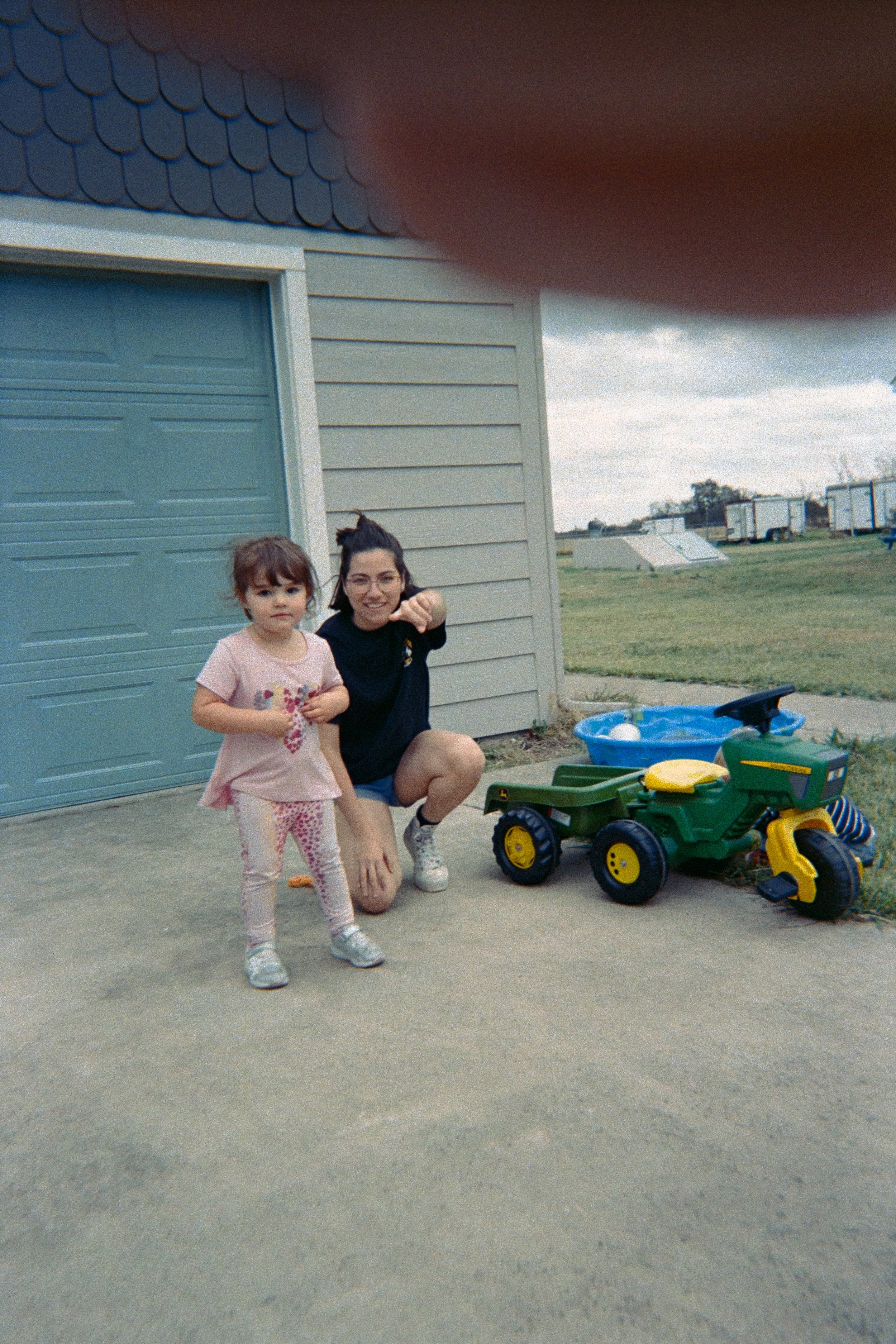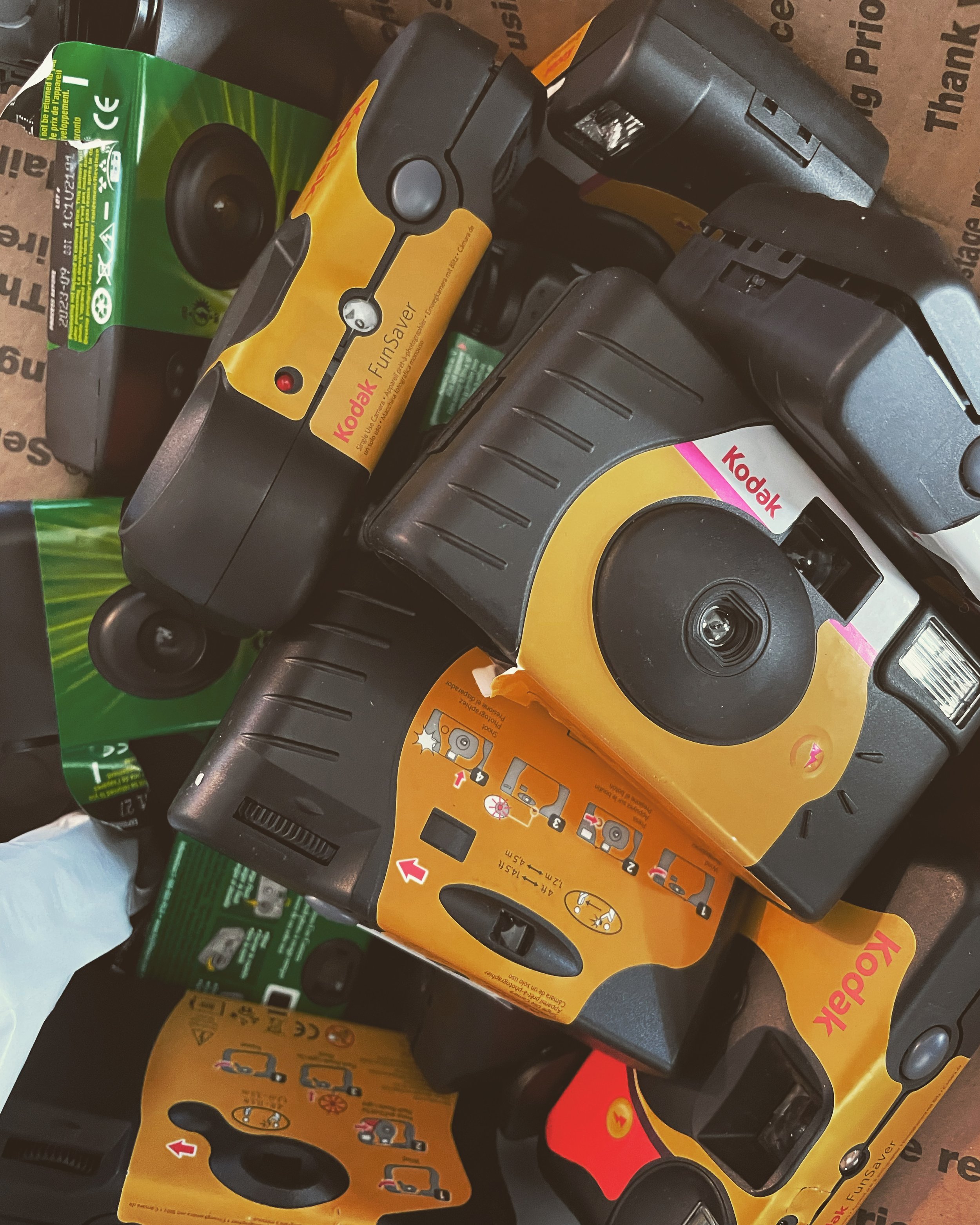The art of analog: how disposable cameras are changing the photography game
Disposable cameras are a great way to break into the film photography world!
In a world where digital cameras and smartphones reign supreme, disposable cameras may seem like a relic from the past. However, these simple point-and-shoot cameras are experiencing a resurgence in popularity, as more and more photographers are discovering the unique charm and creativity that film photography can offer.
The art of analog photography is all about embracing the imperfections and unexpected results that film can provide. Unlike digital photography, which allows for instant reviewing and editing of photos, film photography requires a certain level of patience and trust in the process. The anticipation of waiting for the film to be developed and the surprise of seeing the final images can be incredibly rewarding.
Disposable cameras, in particular, offer a fun and accessible way to get into film photography. Without the investment of a pricey film camera, anyone can pick up a disposable camera and start experimenting with the medium. The simplicity of the cameras also allows for a more carefree, spontaneous approach to photography.
But it's not only enthusiasts and hobbyist that are being drawn to the simplicity and nostalgia of disposable camera, professional photographers also are turning to disposable cameras as a way to add a new perspective to their work. Some of them use them as a tool to inspire a more intuitive and less planned way of working, whilst others use them as a form of self-imposed constraints when working on a project or for their personal work. It's the challenge of getting the perfect shot with just 27 or 39 shots that drives them to try new things and to see the world from a new angle.
Disposable cameras are also a great choice for events such as weddings, parties, and travel. Not only do they add a unique and nostalgic touch to the final photographs, but they can also encourage guests to be more engaged and participatory in the event. Plus, disposable cameras can be a fun and creative party favor or travel souvenir.
In conclusion, disposable cameras are a refreshing change from the digital norm, and they're a great way to explore the art of analog photography. With their simplicity and unexpected results, disposable cameras are sure to inspire creativity and bring a new perspective to your photography. Whether you're a seasoned pro or a beginner, it's worth giving disposable cameras a try and see how they can change your photography game.
Interesting Facts about Disposable Cameras
Here are some interesting facts about disposable cameras and single-use cameras
Disposable cameras are cameras that are designed to be used once and then disposed of. They are a convenient and easy way for people to take photographs without the need for expensive equipment or technical knowledge. Here are some interesting facts about disposable cameras:
Disposable cameras were first introduced in the 1980s, and quickly became popular because they were inexpensive and easy to use.
Disposable cameras are typically made of plastic, and contain a fixed-focus lens, a simple shutter mechanism, and a roll of film.
Disposable cameras are pre-loaded with a roll of film, which typically has a capacity of 24, 27, 36, or 39 exposures.
Disposable cameras are popular for events such as weddings, parties, and other special occasions, where it may be impractical or inconvenient to bring expensive camera equipment.
Disposable cameras can be used in a variety of lighting conditions, and are often used by amateur photographers who are just starting out.
Disposable cameras are generally inexpensive, with prices ranging from a few dollars to around $20, depending on the brand and model.
Disposable cameras had become less popular in recent years due to the widespread availability of digital cameras and smartphones, which offer more advanced features and higher image quality. However, they were still used by some photographers for their simplicity and ease of use. But during the pandemic, people began to pick-up disposables again and their popularity has exploded!
Disposable cameras come with a variety of types of film pre-loaded in them! You can get black and white disposable cameras or color or unique film stocks like those offered by Lomography.
Disposable cameras are now also called single-use cameras in an attempt to rebrand the cameras as something less wasteful.
A large number of disposable cameras are reloaded and resold meaning that one camera might be used multiple times during its life!
Disposable cameras are still in Demand
After the pandemic, film sales, including disposable cameras are way up! So much so that there is even a shortage of disposable cameras. Even though they’ve been around for 40 years, disposable cameras are still a fun and exciting way to capture memories!
We also develop disposable cameras! In fact, we are they disposable camera experts. We develop thousands of disposable cameras each year for customers all over the world. If you’d like to get your disposable developed, click the button below to get started!
How can I develop my disposable camera?
A short list of where you can get you disposable cameras developed!
If you're looking to develop film from a disposable camera, there are a few options available to you. Here are some steps you can follow to get your film developed:
Find a local lab: Many cities have local labs that offer film development services. These labs often have the equipment and expertise to develop a wide range of film types, including those used in disposable cameras.
Send your film to an online lab: There are also several online labs that offer film development services. These labs will required you to mail your film in to them through USPS, UPS, or FedEX. A few labs will send you a prepaid mailer to send your film in. Once they receive it, they'll process the film and either mail you back the prints or make them available for download online.
Develop the film yourself: If you're feeling adventurous, you can also try developing the film yourself. This will require some specialized equipment, such as a darkroom and developing trays, as well as chemicals for processing the film. Developing film at home can be a rewarding and creative process, but it does require some time and effort to learn the necessary skills.
When taking your disposable camera to a local lab or mailing it in, you should consider if you want your negatives returned to you. Many labs no longer return negatives or only do so at an additional cost. The negatives are effectively your originals and can be rescanned over and over again. Many labs simple discard your negatives to help cut costs, so you might want to ask what happens to your negatives and request they be returned to you.
No matter which option you choose, it's important to handle the film carefully to avoid damaging it. Be sure to follow the instructions provided by the lab or equipment you're using, and take care to keep the film away from light and heat during the development process.
Developing film from a disposable camera can be a fun and rewarding experience, whether you choose to do it yourself or send the film off to a lab. With some patience and care, you'll be able to see the photos you captured come to life.
5 Simple Hacks for Getting More Out of Your Disposable Camera
You can have some fun and expand the use of your disposable camera with these simple hacks!
Let’s Hack Your Disposable Camera!
Disposable cameras are fun and super easy to use and take some really great photos but the experience can be pretty cut-and-dried. But with a little creativity and some basic tools, you can get more use out of them. Here are five simple hacks to try:
Rewind the film: If you've used up all the exposures on your disposable camera but still want to keep shooting, you can try rewinding the film. To do this, you'll need a small flathead screwdriver and a pair of tweezers. First, remove the back of the camera and locate the film reel. Then, use the screwdriver to carefully pry the reel out of the camera. Finally, use the tweezers to gently wind the film back into the canister.
Modify the camera for long exposures: If you want to experiment with long exposures, you can modify your disposable camera to allow for longer shutter speeds. To do this, you'll need a piece of electrical tape and a small flashlight. First, cover the flash bulb with the electrical tape to prevent it from firing. Then, use the flashlight to illuminate your subject for the desired length of time.
Use colored filters: For a fun twist on your disposable camera photos, try using colored filters. You can use gel filters or colored cellophane to alter the color of the light that enters the camera. This is a simple way to create unique and creative effects in your photos.
Experiment with multiple exposures: Disposable cameras aren't typically designed for multiple exposures, but you can still try it. To do this, you'll need to take the camera apart and disable the film advance mechanism. Then, you can take as many exposures as you like on the same frame of film.
Create a pinhole camera: If you're feeling really adventurous, you can turn your disposable camera into a pinhole camera. To do this, you'll need to remove the lens and replace it with a small pinhole. This will create unique and artistic images that are soft and dreamy.
In conclusion, there are many ways to get more use out of your disposable camera beyond its intended one-time use. From rewinding the film to creating pinhole cameras, these hacks allow you to unleash your creativity and capture unique and memorable photos.
The History of Disposable Cameras: How They were Invented and How They Have Evolved
The Disposable Camera Idea is Born
The history of disposable cameras is a fascinating one that traces back to the early 20th century. Invented in the 1930s, disposable cameras were originally developed as a way to make photography more accessible and convenient for people who didn't want to deal with the hassle of loading and unloading film.
The First Disposable
The first disposable camera was called the "Kodak Fling," and it was introduced in the United States in the 1980s. This early disposable camera was a simple cardboard box with a single-use camera inside, and it was intended for one-time use only.
The Evolution of the Disposable Camera
Since then, disposable cameras have undergone significant changes and improvements. Today's disposable cameras are made of plastic and are often more durable and reliable than their cardboard predecessors. They also come in a wider range of styles and designs, from sleek and modern to retro and vintage.
One of the most significant developments in the history of disposable cameras was the introduction of the flash. In the 1980s, disposable cameras with built-in flashes became available, making it easier to take well-lit photos in low light conditions.
Another major advancement was the addition of zoom lenses to disposable cameras. This allowed photographers to get closer to their subjects and capture more detailed shots.
Over the years, disposable cameras have continued to evolve and improve. Today, they are widely used for a variety of purposes, including weddings, parties, events, and as favors or gifts.
While digital cameras have largely replaced disposable cameras in recent years, many people still enjoy the simplicity and nostalgia of using disposable cameras. They are a great option for people who want to capture candid, spontaneous moments without worrying about running out of battery or memory.
Disposable Cameras are FUN!
In conclusion, the history of disposable cameras is a rich and varied one that spans more than a century. From the first cardboard cameras to today's sophisticated plastic models, disposable cameras have come a long way and will likely continue to evolve in the future. If you’re looking to pick-up a disposable camera, you’ve got options!
Kodak Disposables
FujiFilm Disposables
Ilford Disposables
Shutter Junkies Disposables
Oh No! There’s a Disposable Camera Shortage!
The World is Running out of Disposable Cameras with Color Film!!!
We’ve searched everywhere and sadly, it looks like there is a big shortage on disposable cameras. Our supplier is out, other vendors, stores, and retailers are out or are imposing 2 to 5 camera limits on purchases. The world has ran out of Kodak disposable cameras
Why is it so hard to find disposable cameras
That’s a great question and to understand the problem, we have to go back to the Great Film Apocalypse that occurred between 2010 and 2012 when people were abandoning film and flocking to digital. There used to be a fantastic infrastructure to support all things film, all over the world. You could walk into almost any store and purchase 35mm film, disposable cameras, and also get that film or disposable camera developed almost anywhere in almost an hour. But after the film apocalypse, demand dropped, companies began to go out of business and the entire infrastructure crumbled. It remains in ruins to this day, which is why us, and several other companies often struggle to find supplies and equipment.
But there was a silver lining, in the midst of bankruptcy, a group of Kodak employees came together to save the company and created Kodak Alaris. This new form of Kodak a long with several movie directors and producers banded together to keep film production going, and they have for the past decade in the hopes of keeping the medium from dying off completely.
An unlikely thing happened…
Film held its own for many years, with many faithful photographers, myself included using film and pushing the #filmisnotdead movement. But in 2020, we all got hit with the pandemic and that changed everything. People found themselves with more free time than usual and began to experiment with new forms of creativity and film sales began to increase. Over the past two years, film sales have skyrocketed! No one could have predicted this would have occurred and what happened caught everyone by surprise, include Kodak Alaris and Fuji.
Film was back and with it, insane demand for 35mm film and disposable cameras!
The problem
So here we are today, and the problem causing our shortage is a logistical one. While Kodak is pumping out film as fast as they can, the real problem lies in companies and equipment to “finish” the film - aka cut it down, punch sprockets, put it in canisters and then into disposable cameras. No one ramped up for this because no one saw it coming. And now, the companies that were just scraping by with minimal film sales and demand are now completely swamped and unable to keep up with demand.
And here we are with the Disposable Camera Shortage of 2022.
What can we do?
The Kodak Funsaver is the camera is shortest supply. Kodak actually makes another camera, the Kodak HD Power Flash which many vendors still have in stock (us included). These are great cameras and in my opinion, better than the FunSavers. Picking up one of these is a great idea, but just know that they won’t be in stock for long!
Another option is to consider Black and White Disposable Cameras! Kodak makes a disposable loaded with its time-tested TRI-X 400 film and its amazing. Ilford also makes several Disposable black and white cameras. The real shortage we are experiencing is with color film so using a black and white model is also an option.
We produce our own affordable Black and White Disposable Camera called the GRIT. Its a Kodak Funsaver shell loaded with a unique black and white film! We love the results we get with the black and white images, just as much as we do the color!
When will the Disposable Camera Shortage End?
That’s a great question and as of fall 2022, we do not have an answer. We’ve been told to expect shortages well into 2023. This is going to be especially tough if you’re looking for large quantities of disposable cameras for weddings or other events. Wedding disposable cameras purchased new are the best quality and produce the best results, but there are some reloaded disposables out there you can use. We do not recommend them as the quality is just terrible, but if its all you can find, its all you can find.
If you’re planning on getting disposable cameras for your wedding, start ordering them as far in advance as you can. Disposable cameras have a two year shelf-life so you’ve got a lot of time to buy and hold on to them. And you don’t want to be three weeks away from your wedding and not be able to get any.
If you need help finding disposable cameras, feel free to send us an email on the Contact Us page and we will be glad to help you out!
What is a Disposable Camera? All the Basics of Disposables
A camera that you can just throw away? Is that really a thing? Well, the answer is yes, and no. Disposable cameras have been around since the late 1980’s, though some iterations of them existed before then, and for several decades were extremely popular. While sales declined after the release of the original iPhone, they never completely stopped and disposable cameras are still being produced today by Kodak, Fuji, and a few other manufacturers.
But what exactly is a disposable camera? What is a disposable camera used for? How does a disposable camera work? These are all questions we are going to explore as we look into the world of disposable or single-use cameras
What is a disposable camera?
Disposable cameras were created during the days of film, when the cost of 35mm cameras was still quite high as an alternative to lugging your expensive Minolta camera around or sending your Nikon SLR to camp with your 7 year-old kid. A disposable camera consists of a plastic shell body, a plastic lens, some simple electronics, and extremely simple shutter, and a roll of 35mm film. The modern version of the disposable camera was created by FujiFilm and Kodak soon released their own 35mm film version. Today, disposable cameras still use 35mm film, iso 800 in Kodak cameras and iso 400 in FujiFilm cameras. Other brands and varieties of disposable cameras exist, such as black and white versions from Ilford and Kodak, but we will mainly be discussing the color negative 35mm film disposable cameras.
Disposable cameras were built to be durable, affordable, simple and easy to use, but still functional enough to produce a decent image even in the hands of an amateur photographer. They are essentially an extremely simple point-and-shoot style film camera. There is no focus, only a focus range. There are no adjustments, shutter speed, aperture, and film speed are set. And the only option you have to try to control exposure is a battery-powered flash which is activated by pressing or sliding a button on most models.
Framing your image is also very basic. Your are given a viewfinder, however it only approximates the image to be taken. Some people struggle with this as most individuals are used taking photos on their phone where they can see in a live view that the image is going to look like. The trick is to try to allow enough space in the frame for any errors by backing up just a little bit. The closer you are to the subject, the more “off” your image will be from the view finder. But for the most part, it won’t ruin your disposable camera pictures unless you are trying to take serious portraits, which no one really does.
What can you use a disposable CAmera For?
Disposable cameras are great for a lot of different purposes. Even though they are designed for simple use, their design and use of 35mm film produces really great results. In many situations, disposable cameras produce better looking results than iPhone and other cell phone cameras. Here are a few scenarios where a disposable camera would work much better than a camera phone.
Outdoor Adventure
The rugged nature of camping, river rafting, hiking, climbing, and anything else outside make it difficult to justify the risk of taking your expensive phone along to get photos. The difference in cost is absurd. A disposable camera might cost as much as $25 companies to a new phone which could easily run $1000 or more. Dropping your phone, cracking your screen is a very real risk, and not just while you’re holding it in your hand. One wrong fall could ruin your phone! Disposable cameras very rugged and can endure a lot of punishment thanks to their simplicity of design. Disposable cameras also carry their own power source and do not need recharging to take photo, where a camera phone would be much more difficult to keep charged on a longer trip.
On an outdoor adventure, a disposable camera has these advantages:
Rugged and durable
Cheaper to replace if lost or damaged
Does not need recharging
Takes amazing photos outside during the day or night!
Kids Summer Camp
The kids are going away for a week, or two, or if you’re lucky a month or more, but there’s a really good chance that your awesome but someone irresponsible child might not make it back with their expensive smart phone if you allow them to use it freely. Disposable cameras are perfect for Summer Camps! The same lower-cost if lost principle applies and being very rugged and durable doesn’t hurt either. Plus, your child will be the coolest kid there when they pull out their film loaded disposable camera while all of the other nerds are using those lame camera phones.
At a summer camp, a disposable camera has these advantages:
Rugged and Durable
Cheaper to replace if lost or damaged
Does not need recharging
Cool factor
Simple to use
Can be customized with markers, paint, and/or stickers
Parties
Disposable cameras are fantastic for parties of all sorts, but disposable cameras are absolutely amazing for parties where things might get a little crazy. If there’s going to be a lot of alcohol involved, disposable cameras are an absolute must! Rugged, durable, cheap, all apply here, but there are several other factors introduced by the party environment that you might not have considered.
At a party, a disposable camera has these advantages:
Rugged and Durable
Cheaper to replace if lost of damaged
Does not need recharging
Cool factor
Simple to use, even if you’re intoxicated
You can’t drunk-text an ex with one
You can’t share embarrassing images the moment you take them
Any embarrassing images you do take can just be throw away before anyone else sees them
A Night on the Town
Heading out to the bar or the club or even a concert with your friends? A disposable camera is a perfect addition and takes great photos, as long as your remember to use your flash! For all of the same reasons above (rugged, durable, cheap, etc) a disposable camera can add an element of fun and adventure to your night out!
Conclusion
What is a disposable camera? A disposable camera is an affordable alternative to using your cell phone or an expensive digital or film camera that allows you to add a unique look and vibe to your images! They are not instant, but they are fun in that moment. The click of the shutter, the flash of light, and winding to the next frame, make the experience something memorable.
Got Questions about Disposable Cameras or Developing?
Send us an email and we’d be happy to answer any questions you might have! From buying disposable cameras to developing them, we are the disposable camera experts!
Are Disposable Cameras Worth It?
With film prices on the rise, are disposable cameras still worth the cost?
Let’s admit it, there is something really cool about a disposable camera. The pictures have a certain look, and when you pull one out, everyone wants to be in the photo. But as film prices are rising, is it still worth getting a disposable camera in 2022?
The cost of using a Disposable CAmera
Before we can really address the question of “Are Disposable Cameras Worth It?”, we should probably look at the total cost involved in using one. Disposable or Single-Use cameras are essentially economically made plastic cameras with a roll of 35mm film inside. Every time you buy a disposable camera, your essentially buying a new camera and a new roll of film. A quick check of prices today reveals that most color-negative disposable cameras are costing between $16 and $22 each. Most of the time, you will have to order them as fewer and fewer stores are carrying them in stock. Of course if you order one online, you’ll have to have it shipped, so for the sake of averages we will say that the average disposable camera is going to cost you $20 to purchase.
After you’ve shot your 27 exposures, the disposable camera must be developed. Prices for processing vary from lab to lab, but we are going to assume you will be using us, Shutter Junkies, to process your film. For camera processing, the cost is $12. You can add prints to your camera for an additional $12, but we won’t take that into consideration as must customers are happy with a digital copy only. Of course, you have to mail your cameras in to almost every lab, so we will add an additional $5 for shipping so we can truly capture all of the costs.
So here’s the break down of costs of using a disposable camera:
Purchase the Disposable Camera - $20
Developing the Disposable camera - $12
Postage - $5
Total Cost of Using a Disposable Camera- $37
Compare the Cost of Disposable vs. Digital
When it comes to comparing the cost, its hard to make a case for disposable cameras when digital photos on your phone or camera are practically free. We could easily try to factor in the cost of the phone, or camera, the cost of the SD card, the cost of the cloud storage, but the truth is that all of those things are reusable and so the costs are spread out so much across the life of the device that it would practically nothing once you calculated how many photos you can take with a device over its life. The costs of using digital are practically nothing. So there’s that to consider.
The real benefits of using a disposable Camera
While the allure of the freeness of digital is extremely appealing, there are several aspects of disposable camera photography that make it worth the cost!
The Film Look of a Disposable Camera
The first thing you cannot miss is that classic film look. Disposable cameras are just cheap, plastic cameras, but they are still film cameras and produce that classic, retro vibe associated with film. We develop thousands of rolls of film and even the most mundane film photos still has a unique look to it that digital just cannot replicate. You can try throwing filters and effects at a digital image, but you’re always going to fall short.
The durability of Film
The other awesome thing about a disposable cameras is that the film they use lasts a really really long time, once developed. We return all of your negatives to you so that you can archived them and either scan or make optical prints from them later. Film can be rescanned over and over again, and it lasts for years. Even if you lose your phone, get locked out of your iCloud or can’t access your digital images, you’ve always got you negatives with you! They will probably outlive you!
Standing out in a crowd
Every form of social media is saturated with iPhone images with the same old filters. Your digital images are more than likely going to get lost in the thousands of other similar looking pictures. But your disposable camera photos are going to be unique enough to stop the scroll and get those likes! Don’t believe me- just search the hash tag #disposablecamera on any social media and take a look at the amazing images! Film images still attract a lot of attention, simply because they look different and as we scroll, the brain is subconsciously looking for different!
Conclusion - Are disposable CAmeras Worth it?
An objective answer to this question would have to be “sometimes they are”. At a cost of $37 to get your images, its not something you’re going to be shooting with every day. But they are definitely worth it for those occasions you want to remember and create a special set of images for. With a disposable camera, its not just about taking photos, its about creating memories that will last for years.
So plan those trips, concerts, dates, outings with friends, or family, or the kids and stock up on some disposable cameras because those moments are priceless and deserve far better treatment that a quick generic photo with your camera phone.
The Ilford IlfoColor Rapid Retro Disposable Camera Review
Is the Ilford Ilfocolor Rapid Retro Edition a good camera? Check out this Ilford Rapid Retro Review to see if this is a good camera for you!
Sometimes, I have to admit, I just a sucker for vintage/retro packaging. I had been trying to resist the urge to buy one of Ilford’s color disposable cameras, but the more I saw them pop-up, the harder it was to resist. And so, I finally broke down and bought one. And after shooting with it, I have to say, I was very pleasantly surprised!
What I assumed about the Camera before Even Ordering it
Ilford had been around a long time as a film manufacturer and even have a very good line of black and white disposable cameras using their HP5 and HP4 films. But I’ve never even really heard of them making a color film stock in recent years. I assumed that the Ilford Rapid Retro was more or less a repackaging/rebranding of another disposable camera with a 3rd party film. I couldn’t find any examples of the photos taken with the Ilfocolor film, so I wasn’t exactly sure what to expect. The film was rated at ISO 800, and what I expected was some of the cheap and absolutely awful Chinese film stocks that I often see in Etsy disposable cameras. But what I found actually surprised me!
The Ilford Ilfocolor Rapid Retro at First Glance
The packaging was cool looking, it had basic instructions. It appeared to be a slightly above average disposable camera once I opened the shipping box! Fuji and Kodak disposable cameras don’t really come in boxes any more so the packaging was far better than the norm!
The Ilford Ilfocolor Camera
The camera body here was definitely not a new design or even one that Ilford had used before. Shutter Junkies develops a lot of disposable cameras from all over the world and we’ve only seen this camera body type a few times. The body used to be sold here in the United States as some cheaper third party brands. But since film fell off they’ve all disappeared. This body is still used more in Europe however as we’ve received some newer cameras from there with this same body.
The body itself is standard. Basic film winder, exposure counter, shutter button, nothing fancy. The only really distinguishing feature is the flash’s on switch. Kodak disposable cameras have button you press to charge and Fuji disposable cameras come with a small slider that slides up with a prism that glows red to indicate that the flash is charged and on. The Ilfocolor Rapid Retor features a sliding switch that slides out, extending past the border of the camera body. Its a strange design and not particularly attractive. The one good thing is that you won’t forget that your flash is on!
The Form and Function of the Ilfocolor Rapid Retro
Beyond the goofy flash switch, the camera feels solid and works well. It fits nicely in your hand, and all of the winding, shutter, and flash switches work nicely with no excess play or sense that the camera is poorly made. The Rapid Retro is a solid build little disposable camera!
To be honest, the camera feels to be a little better quality that the Fuji cameras out there. Fuji cameras feel like they are just made from the cheapest plastic ever. The Ilford Ilfocolor feels a bit more solid. I decided to chase my children around the house and yard and see if the camera and I could keep up. I didn’t have a problem winding and shooting at the speed my little kids were moving. Overall I was somewhat impressed by the quality and build.
But I couldn’t help wondering with each click of the shutter, what kind of film was in this thing? What are my pictures going to look like??
Ilford Ilfocolor Rapid Retro Pictures
I opened the camera and pulled out what appeared to be a standard generic 800 speed film. There was no branding or indicator markings of any kind. This definitely wasn’t an Ilford film. The film canister looked very similar to that of the Lomography Color Negative 800 film, which is an amazing film stock that I absolutely love shooting with. But without any branding, I just assumed the worse.
I developed the film and watched impatiently as the film dried. The images looked decent. Most of the images were dense enough. There were a few I purposefully under exposed just to see how the film would perform. I had tried to take photos in a variety of lighting settings, similar to what I see my customers sending in with their disposables. We took some outside with and without the flash, inside with and without the flash, running, walking, and standing still. I could definitely identify the images where I thought I was underexposing. The negatives looked exactly as I expected. So far, the film was performing ok, like a normal color negative ISO 800 film in a disposable camera body.
Once the film was dried, the film went right to the scanner where I can finally say, I was very pleased with the results! The film itself still had no markings to indicate a brand, but the colors and the feel of the images really remind me of Lomography Color Negative 800 film. The images were saturated in some colors and a little more subdued in others but all of the colors were vibrant. The contrast to me felt a little low so I bumped it up in the software, but the unedited image was a nice colorful flatter style which was ok. It was nice to have some latitude to work with/edit with though. After reviewing the images over and over, I had to finally admit that I liked how they turned out! I don’t think I would recommend this camera for weddings or company events, but for individuals capturing moments that want a warm, personal, retro feel, the Ilford Ilfocolor Rapid Retro would be a great option!
The Final Word on the Ilford Ilfocolor Rapid Retro Disposable Camera
If you’re looking for a fun camera that will give an interesting and fun stylized look to your images, this camera is for you! A solid camera, easy to use, really just down right fun to use, performs consistently with other big-brand cameras on the market, this camera definitely does not disappoint. I expected the worst yet the results I got were exciting and fun!
If you’re looking for a slightly different experience with a disposable camera, the Ilford Ilfocolor Rapid Retro is the camera you should pick-up!
Can You Still Develop Old Disposable Cameras?
Can you still get old disposable cameras developed? Yes you can! The images won’t be perfect, but with a good lab you can get some usable images back from an old disposable camera!
Old Disposable Film - Can you Still Develop it?
Not too long ago, we had a big ‘clean-up’ day at our house. Like a lot of people, we had collected too much clutter and needed to purge our house of all of the junk and random things that were just laying around, collecting dust. None of us were looking forward to it. I ended up being assigned the oh-so-much super fun role of cleaning out the random draws in our house. As I went through the seemingly endless odds and ins we had for some reason decided to save over the years, I made a discovery! A discovery that immediately ended my drawer duties, much to my wife’s frustration. In one of the drawers, tucked away for over 15 years, I found 6 disposable cameras! I had no idea all these throw away cameras were there! My wife barely remembered putting them in the draw, but now could not remember what was on the cameras. For a photography and film nerd like myself, finding old disposable cameras or old film is like finding a treasure chest. Who knows what memories and images could have been taken. I was beyond excited!
Many of you have come across old disposable cameras as you’ve cleaned. Maybe they were yours, or maybe they belonged to one of your kids, or maybe another family member, but regardless, once they are found the question arises: “Can you develop old disposable cameras?”
Can You Still Develop Old Disposable Cameras?
The short and simple answer is yes, you can still develop them! The real question is, will we get any viewable images out of our old disposable film? Most people think that a throwaway camera is just cheap and not worth saving once its old but to answer the question about developing them once their old, we’re going to have to consider a number of factors.
What can damage photographic film?
How film works is nothing short of a miracle. Silver bromide and dyes and other layers are applied to a thin film that when it works together are light sensitive and can even display color! There are so many chemical and physical aspects to film, but we don’t want to get too deep here. Let’s discuss the big issues. Heat is one of the biggest things that can damage the film. I’ve developed disposable cameras that have lived in the trunk of a person’s car for several years. Let me tell you, those images were a disaster. The images I was able to salvage had extremely distorted colors and the worst graininess I’ve ever seen. Most of the contrast was washed away also. The images reminded me of being a kid in the 1980s trying to get reception on a certain TV station only to be able to barely get a signal. You could tell there was something there, but not clearly enough to have usable to viewable images.
Besides heat, moisture can have a huge effect on the film. It is possible that moisture in the form of condensation can build up on the inside of the canister even (inside of the disposable camera). Moisture inside of the canister can damage the emulsion or cause abnormal effects with the film itself. Heat and moisture are the enemies of exposed film! But there are ways to battle heat and moisture. Exposed film has two more enemies that cannot be prevented.
One of those enemies is gamma radiation. Gamma radiation is all around us, causing issues all the time, but the older undeveloped film gets, the more it is affected by gamma radiation. According to Kodak, gamma radiation has an effect on the image effectiveness of the film, but it mostly increases the appearance of grain and fog in the image. The older the film gets, the grainier it is going to become. I’ve developed some films that are 20 to 30 years old and have terrible amounts of grain that really begin to distract from the image.
The other issue that drastically affects older undeveloped disposable cameras is the natural order of the energy and the chemistry that makes the film work. Essentially capturing photons in the form of electrons in silver-bromide, during the development process those molecules are transformed into fixed silver which creates an image. Until the film is developed, you actually don’t have an image on the film. Rather, it is a latent image made up of captured energy. And like all prisoners, that energy just wants to escape. Over long periods of time enough can escape to really degrade the quality of your image.
How I can slow this natural decay?
Storing your Disposable Cameras in the fridge helps! Keeping the film cold prevents those electrons from breaking free and making a run for it. But even cold storage will not delay decay for long. Most exposed films need to be developed within 6 months of shooting. Any time after 6 months, your images are going to start to break down. Now, don’t get me wrong, this is a very slow process. Disposable cameras that are 2 years old won’t be that bad. Disposable cameras that are 22 years old however will begin to look kinda bad. And to add to the issues, most manufacturers were not putting the best quality film in disposable cameras in the late 1990s and early 2000s. Kodak Disposable Cameras and Fuji Disposable Cameras generally hold up ok. But store brands and other off brands do not. And if you purchased cameras that were refurbished in china (most Etsy wedding cameras are of this type), those go really fast because they use really really a low-quality film stock.
The bottom line is if you want the best possible images from your disposable camera, store them in a cool dry place and get them developed as soon as possible!
What will the Images from My Old Disposable Camera Look Like?
So ok, you didn’t do any of the things above and you’re like us and have had these disposable cameras just sitting in a draw for years needing to be developed. What are your images going to look like?
The pictures from your old disposable camera are more than likely going to exhibit three traits. The first trait is decreased contrast. Your image will appear flatter with a less noticeable difference between the highlights and the shadow.
The second trait you will notice is distorted color. Your final images will have color shifts. Some of which can be easily fixed but some are impossible to restore without extremely detailed work. A way to work around this is to develop your old disposable cameras as black and white images. While you lose the color (which is distorted probably anyways) you can salvage some of the image quality. You can ask the lab to process your disposable camera as black and white if you’re worried!
The third trait is graininess. And oh my goodness do old disposable cameras get grainy. Combine that with the first two issues and you can end up with a mess of an image.
If you take a look at your negatives, you will also notice some pretty severe curling and brittleness. There is also a good chance that the negatives will be substantially darker than fresh film.
Is it worth getting old disposable cameras developed?
Absolutely! The images on an old throw away camera may be a beautiful reminder of the past, holding precious moments, the faces of friends and family or special events that you have long forgotten. But you shouldn’t wait to get them developed! The sooner you get the processed, the better. The decay is only going to get worse!
Where can I go to get old disposable cameras developed?
There are actually a number of places that will develop your old disposable cameras. While you can take them to a drop-off location like CVS or Walmart, they may not provide your older film with the special care it needs. We could recommend using one of the higher-quality mail-in services that exist. Check out our post on Where do I go to get my Disposable Cameras Developed?
If you’re looking for a quality and customer service-centered photo lab for your old disposable cameras, then our photo lab may be exactly what you are looking for! We develop hundreds of disposable cameras every month, both new and old! Click HERE to get started!
Finding Treasure on an Old Throwaway camera
How do you get images off of an old disposable camera? That’s easy, you get those old throw away cameras developed, which is exactly what I did when I found those cameras in our draw. On those 6 cameras were images of our grown son, and family that had passed away from a big family birthday party we had had years ago. As I carefully developed and scanned the images I couldn’t help but well up with tears of joy at the smiling faces I saw, some of them I haven’t seen in years. My adult son’s little kid face, my grandfather’s amazing smile, my dad’s goofy grin. All images I immediately treasured, which had been almost completely forgotten about if my wife hadn’t made me clean up the drawers.
I shared all of those images with my family. We laughed and cried together. If you find old disposable cameras, remember that the cameras are disposable, but the memories inside are not!
Also, check out this great Kodak resource on storing and handling unprocessed film!





